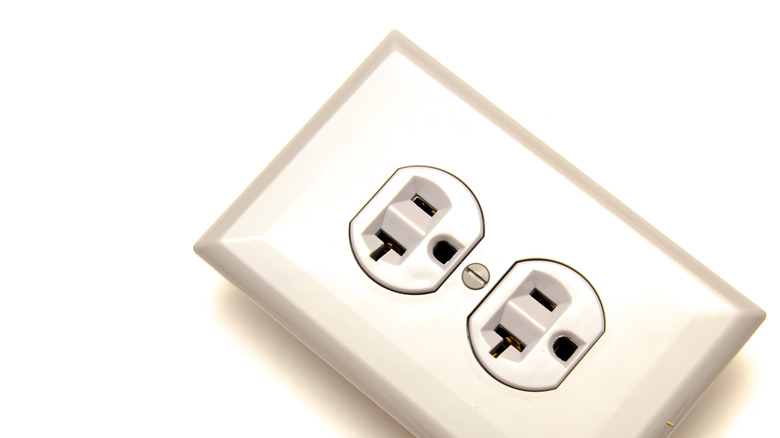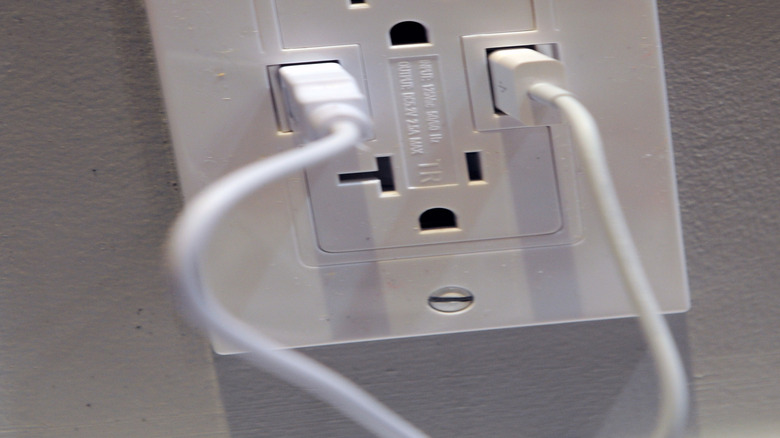Why Do Some Electrical Outlets Have A T-Shaped Hole?
If you've ever travelled overseas, then you're likely already familiar with how many different types of electrical plugs and outlets there are. In the US, the sockets are usually two thin vertical holes next to each other. Sometimes, they come with an upside-down U-shaped hole on the bottom, which serves as the grounding port. Meanwhile, in many countries in Europe, you'll typically see either two round holes or three prongs in a triangle pattern, two of which are horizontal rectangles.
Although designed differently, these socket types are generally used for the same devices: low-amperage consumer and household devices like phone chargers, streaming devices, and desk lamps. If the outlets are rated at 15A, you can also plug in more power-hungry appliances like kettles, radiators, and tumble dryers without running into electrical troubles.
But besides the usual wall receptacle you'll see in your home and in hotels abroad, there's one other particularly interesting design you might sometimes encounter: the outlet with a T-shaped hole. What is this port for, and why is the socket configured that way?
The T-shaped hole on some wall outlets, explained
When an outlet has a T-shaped hole, it simply means that it's rated at 20A instead of the typical 2.5 to 15A. This higher capacity allows you to use the socket for heavy-duty appliances and equipment — think industrial power tools and space heaters.
Outlets with a T-shaped hole could either be a 20A 125V variant (known as NEMA 5-20R) or a 20A 250V one (also called NEMA 6-20R). You'll know which is which by looking at the orientation of the rectangular port next to it. If it's vertical, it's a 125V socket, but if it's horizontal, it's rated at 250V.
Normally, you'll see the NEMA 5-20R as a GFCI, AFCI, or tamper-resistant outlet. GFCI, short for Ground Fault Circuit Interrupter, checks for ground faults like water splashes and automatically turns off the power connection to prevent electrical shock. These outlets are best used anywhere near water sources like the kitchen sink, bathroom, and patio. On the other hand, AFCI, which stands for Arc-Fault Circuit Interrupter, functions similarly to the GFCI. But instead of looking for ground faults, it monitors any arcing fault, usually caused by overload or damaged wiring or cord, and could lead to an electrical fire. Meanwhile, a tamper-resistant socket comes with internal shutters to cover each of the ports. You need to apply equal pressure to the shutters at the same time to open them, meaning inserting an object like a fork or toy in just one of the holes won't work. This design helps avoid electric shock, especially for kids.
The NEMA 6-20R is commonly used for charging electric vehicles (particularly via the second level of EV charging) and powering massive air conditioning units. However, this receptacle is also widely used in commercial spaces that require high power capacity. This includes car repair shops running large air compressors, manufacturing plants with heavy machinery, and bakeries with commercial ovens.

